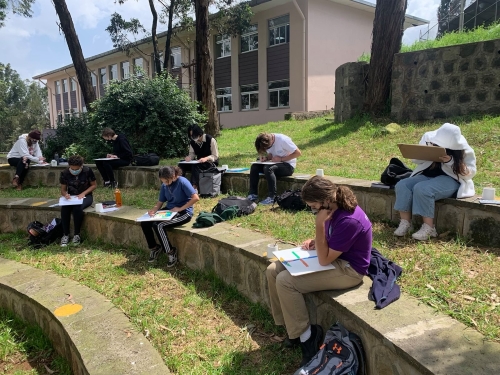Differentiation: Why it Matters

“Differentiation” is a buzzword in education. Some of us have a good idea of what this means while others of us feel that it is an unclear expectation for teachers. Carol Ann Tomlinson, an expert in the field of differentiation, defines it this way: “differentiation means tailoring instruction to meet individual needs. Whether teachers differentiate content, process, products, or the learning environment, the use of ongoing assessment and flexible grouping makes this a successful approach to instruction.”i While this definition may seem overwhelming, it is important to remember that differentiation can be done effectively and on a practical level.
Differentiation does not mean you make an individual lesson for each student, nor does it mean you have to use all types of differentiation in every lesson. What is important is that you are not always using the same teaching method, the same materials, and the  same product with no variation. Differentiation starts by acknowledging that you have a variety of learners in your classroom with a variety of strengths and weaknesses, and then determining that you, as the teacher, will do your best to meet each student where they are and help them grow. You can start by looking for just one or two new things to incorporate into your teaching and classroom.
same product with no variation. Differentiation starts by acknowledging that you have a variety of learners in your classroom with a variety of strengths and weaknesses, and then determining that you, as the teacher, will do your best to meet each student where they are and help them grow. You can start by looking for just one or two new things to incorporate into your teaching and classroom.
Consider the following stories...
Differentiation of Content
Imagine you are a high school student who has only been studying in English for the past three years. You feel confident in your ability to make it through your classes, but you know it requires you to learn so many more new vocabulary words than a native speaker. Then the teacher places a book in front of you and says, “Welcome to Shakespeare!” You open the book and try to read a few lines… this can’t be English! you think. Thankfully, after passing out the books, the teacher explains that while you will be studying some of the original Shakespeare in class, she will also provide you with other materials to help support your understanding of the text. She gives you a website to
visit called “No Fear Shakespeare”ii as well as a graphic novel of the play. When you open the graphic novel, you find lots of great pictures and just a small bit of dialogue. Your heart stops racing, and you begin to feel that you too can learn something about Shakespeare.
Differentiation in Learning Environment/Process
Imagine you are a fifth-grade student with attention issues. Your teacher had you read part of the textbook and draw a picture of the circulatory system two days ago, but you weren’t really sure you understood much. Yesterday, the class watched a video about the heart, and that was interesting and a little more helpful. Today when you come into class, your teacher announces that class will be outside. This is exciting because it means you probably don’t have to sit the whole time. When you arrive at the blacktop, each student is assigned a place to stand along the huge circulatory system that is drawn in chalk. You and your classmates then pass a red plate, representing a blood cell to each other. When you get the plate, you are asked to explain your part’s function and decide whether to add or remove a red or blue piece of fabric representing oxygen and CO2. At the end of class, you are thankful your teacher helped you learn how your blood flows through your body in a fun and understandable way.
Differentiation of Product
Imagine you are a gifted writer in a high school history class. After learning about WWII, your teacher says that your project will be called “Choose 40.” When you get the packet with the directions, you find that there are a lot of different questions with different point values. Some are short answer questions with small point values, while others are longer essays with higher point values. Your teacher explains that you can choose which questions you want to answer as long as you have 40 points worth completed for the final project. What piques your interest is finding one of the essay prompts which asks you to respond in the form of a letter from a soldier. You are thankful that you will not have to only pick questions you find more tedious, since there are a few that will allow you to write more creatively.
essays with higher point values. Your teacher explains that you can choose which questions you want to answer as long as you have 40 points worth completed for the final project. What piques your interest is finding one of the essay prompts which asks you to respond in the form of a letter from a soldier. You are thankful that you will not have to only pick questions you find more tedious, since there are a few that will allow you to write more creatively.
By implementing differentiation in one of these areas (content, the learning environment/process, or a product), you can easily tailor instruction to meet the needs and interests of various learners in your classroom. Differentiation does not have to be a frightening, overwhelming word.
Rebecca Buergin
Resource Room Supervisor
Black Forest Academy, Germany
i Tomlinson, C. A. What is Differentiated Instruction? Reading Rockets. https://www.readingrockets.org/article/what-differentiated-instruction.
ii Used as an illustration, though there is a series of books entitled “No Fear Shakespeare” that can be found online at https://www.sparknotes.com/shakespeare/.
Photo Credits:
Team of Paper People by Jeshu John via Designerspics.com. Cropped and recolored from original.
Bingham Academy. Cropped from original.
Writing on Notebook with Pencil by Jeshu John via Designerspics.com.



